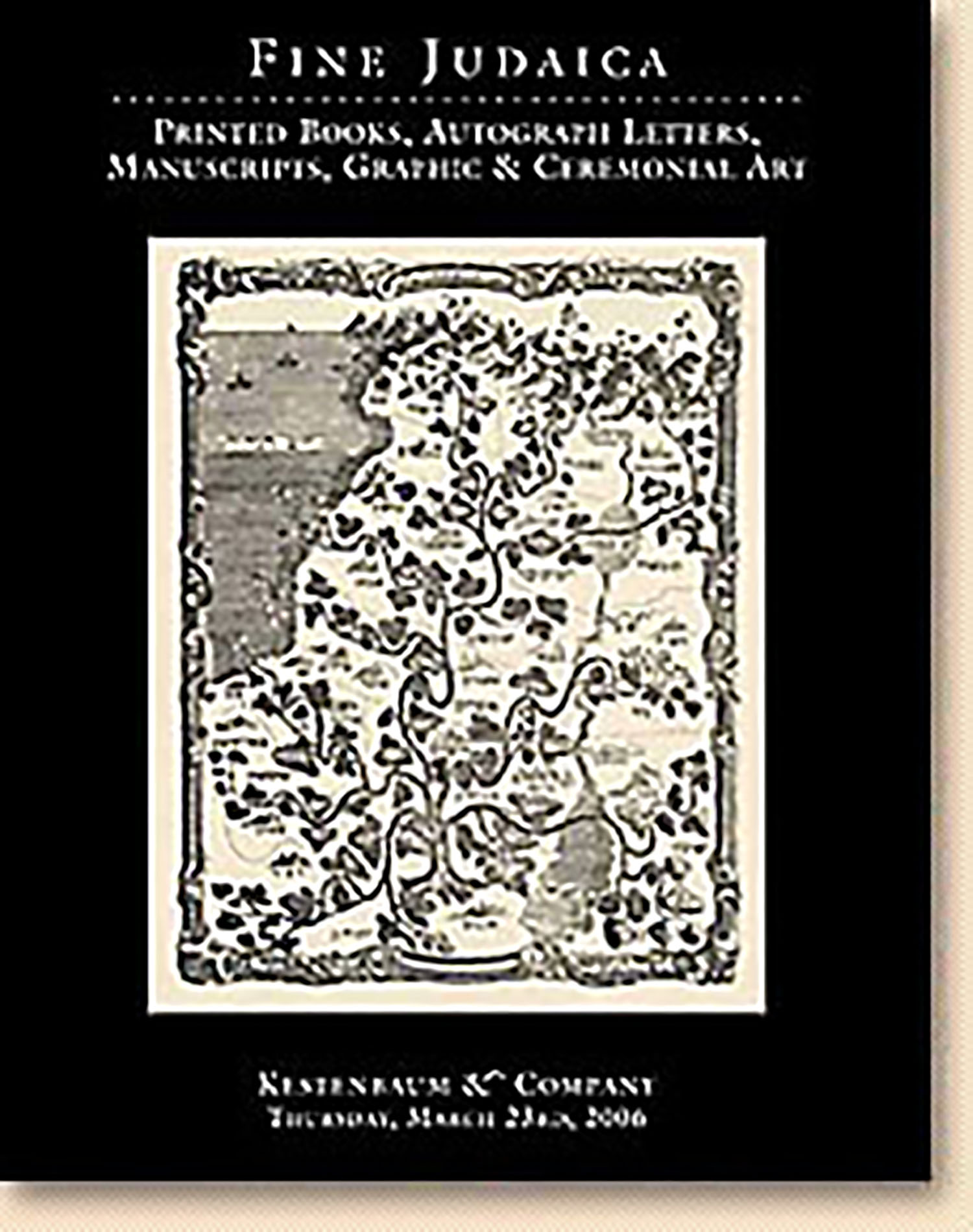(Afghanistan)

AUCTION 32 |
Thursday, March 23rd,
2006 at 1:00
Fine Judaica: Printed Books, Autographed Letters, Manuscripts, Graphics and Ceremonial Art
Lot 196
(Afghanistan)
Herat, Afghanistan: 19th Century
Est: $1,000 - $1,500
Afghanistan once boasted an historic Jewish community, which could trace its origins back to the Ten Lost Tribes of Israel, according to some scholars, or at least to the tenth century. After the forced conversion in 1839 of the Jews of Meshed, Persia by fanatical Shi’ites, many of the Meshedi “anusim,” as they are called, clandestinely made their way across the border to adjacent Afghanistan, swelling the population of the native Afghani Jewish population. The city of Herat in western Afghanistan became the principal center of Jewish life in the country. On the eve of Israel’s independence in 1948, approximately 5,000 Jews were living in Afghanistan. See EJ, Vol. II, cols.326-328
The verse in Psalm 16, verse 8, reads: “Shivithi Adona-i le-negdi thamid” [I placed the Lor-d before me always]. Kabbalists took this literally to mean that one should constantly meditate on the four-lettered name of God. It became customary to hang a plaque with the Name in bold on the wall of the synagogue over the prayer leader’s stand. In time, the “Shivithi” became a distinct genre of Jewish ceremonial art with various embellishments of a mystical and also artistic nature
